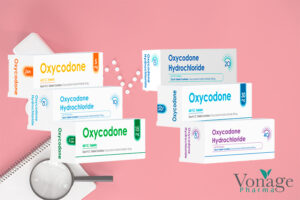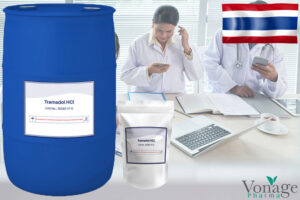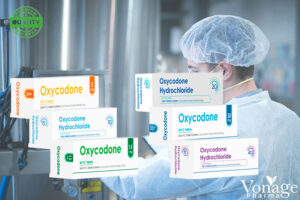Pharmaceutical providers looking to procure active pharmaceutical ingredients (APIs) face numerous challenges, especially when dealing with specialized drugs like miglustat. Used primarily for treating rare metabolic disorders such as Gaucher Disease and Niemann-Pick Disease, the miglustat cost structure is influenced by a variety of complex factors.
Understanding these factors is crucial for pharmaceutical buyers aiming to optimize procurement strategies, control costs, and ensure reliable supply. This article delves into the key drivers behind the miglustat cost, supported by market data and industry insights.
Overview of the Miglustat Market
Miglustat is classified as an orphan drug due to its application in rare diseases. The global market for miglustat APIs is growing steadily, with projections indicating a rise from approximately US$209 million in 2024 to around US$270 million by 2031, representing a compound annual growth rate (CAGR) of about 3.8% (Miglustat API Market Research). This growth is driven by increased diagnosis rates, expanded treatment adoption, and the entry of generic manufacturers following patent expirations.
Key Factors Affecting Miglustat Cost
-
Regulatory Compliance and Quality Standards
Regulatory requirements significantly impact miglustat cost. Countries with stringent regulatory frameworks, such as the United States and European Union, impose rigorous Good Manufacturing Practice (GMP) standards, quality assurance protocols, and extensive documentation requirements. These regulations ensure product safety and efficacy but also increase manufacturing expenses, which are passed on to buyers.
For example, the U.S. Food and Drug Administration (FDA) and the European Medicines Agency (EMA) require comprehensive validation and quality control processes. Compliance with these standards necessitates investment in state-of-the-art facilities, skilled personnel, and thorough testing, all contributing to higher API costs.
-
Patent Protection and Generic Market Entry
Patent status is a fundamental driver of miglustat cost. During patent protection, the manufacturer enjoys market exclusivity, often resulting in premium pricing. However, once patents expire, generic manufacturers enter the market, increasing competition and driving prices down.
In countries with active generic substitution policies, such as Sweden, generic versions can reduce prices significantly, sometimes by nearly 50%. For instance, Sweden’s “product-of-the-month” policy incentivizes pharmacies to dispense the lowest-priced generic, leading to reduced costs for both buyers and patients.
-
Raw Material and Manufacturing Expenses
The cost of raw materials, energy, labor, and manufacturing technology directly influences the miglustat cost. Variability in the availability and price of raw materials—often sourced globally—can cause fluctuations in API pricing. Additionally, advances in manufacturing processes, such as continuous flow synthesis, can improve yields and reduce costs over time.
However, supply chain disruptions, such as those experienced during the COVID-19 pandemic or geopolitical conflicts, can lead to raw material shortages and increased prices. These factors highlight the importance of resilient supply chains and diversified sourcing strategies.
-
Currency Exchange Rates
Currency fluctuations affect API pricing, especially when procurement involves cross-border transactions. For example, the depreciation of the Swedish krona against the euro in recent years has contributed to relatively lower pharmaceutical prices in Sweden compared to other European countries.
Pharmaceutical buyers must monitor exchange rates closely and consider hedging strategies to mitigate risks associated with currency volatility, which can otherwise inflate miglustat cost unexpectedly.
-
Supplier Competition and Market Dynamics
The number of qualified API manufacturers and the level of competition in the market play a critical role in pricing. Regions with multiple GMP-certified suppliers, such as India and Switzerland, tend to offer more competitive prices due to market competition.
Trade data indicates that there are approximately 18 exporters and 30 importers actively trading miglustat APIs globally. Switzerland, India, and Malta are among the leading exporters, while Germany, Russia, and India are key importers. This competitive landscape helps pharmaceutical buyers negotiate better terms and optimize costs.
-
Trade Policies and Logistics
Import tariffs, customs duties, transportation costs, and geopolitical factors also influence miglustat cost. Countries reliant on imported APIs may face additional expenses due to tariffs or logistical challenges.
Global events such as the Russo-Ukrainian conflict and pandemic-related disruptions have underscored the fragility of supply chains, leading to increased shipping costs and delays. Pharmaceutical companies must factor these variables into their procurement budgets and timelines.
Statistical Insights on Miglustat Cost
- Market Size and Growth: The global miglustat API market is forecasted to grow from US$209 million in 2024 to US$270 million by 2031 (CAGR 3.8%) (Miglustat API Market Research). Other estimates place the 2029 market at US$250–252.7 million (Global Market Insights).
- Regional Dynamics: North America, particularly the United States, will continue to play a pivotal role in market development, while Europe is also expected to experience significant growth due to strong adoption of advanced technology and policy support
- Competitive Landscape: The market is characterized by intense competition, with major players and new entrants investing in R&D and capacity expansion
- Application Segments: Capsules remain the most common pharmaceutical form for miglustat, with purity levels above 99% representing a key market segment
- End-User Segments: Hospitals, pharmaceutical companies, research institutes, and contract research organizations (CROs) are the primary end-users driving demand
Strategies for Pharmaceutical Buyers to Optimize Miglustat Cost
- Supplier Diversification: Engaging multiple GMP-certified suppliers across different regions mitigates risks related to supply disruptions and price volatility.
- Long-Term Contracts: Negotiating long-term agreements with suppliers can secure better pricing and ensure supply continuity.
- Market Intelligence: Leveraging real-time market data on pricing trends, supplier certifications, and geopolitical developments helps buyers make informed decisions.
- Currency Risk Management: Employing hedging or multi-currency procurement strategies can protect against exchange rate fluctuations.
- Regulatory Compliance: Partnering with suppliers who maintain robust compliance reduces the risks of costly delays or rejections.
Conclusion
The miglustat cost for pharmaceutical API buyers is influenced by a multifaceted set of factors, including regulatory compliance, patent status, raw material prices, currency fluctuations, supplier competition, and trade logistics. By understanding these drivers and leveraging market data, pharmaceutical providers can optimize procurement strategies to balance cost efficiency with quality and supply reliability.
As the global market for miglustat continues to grow, proactive sourcing and risk management will be essential to ensure affordable and uninterrupted access to this critical therapy for patients worldwide.







